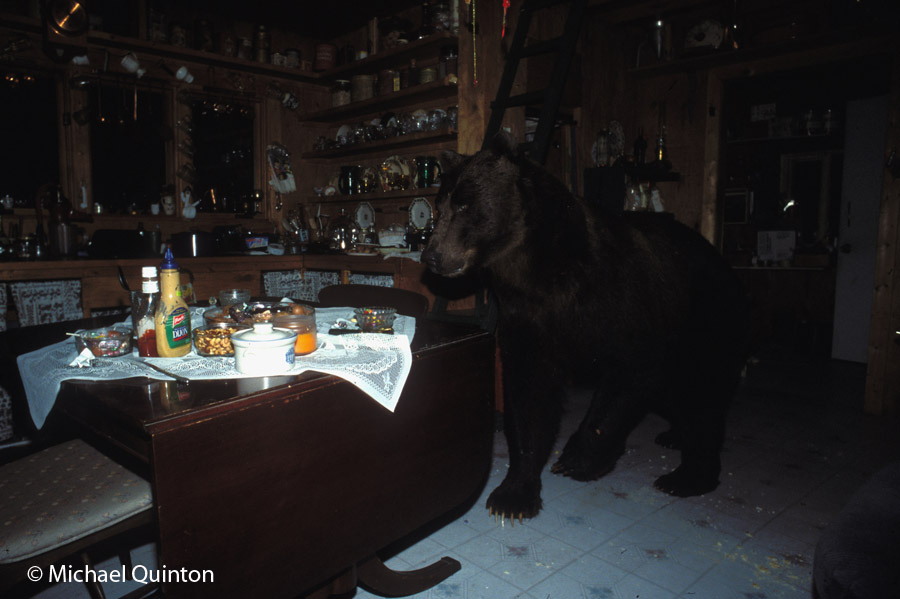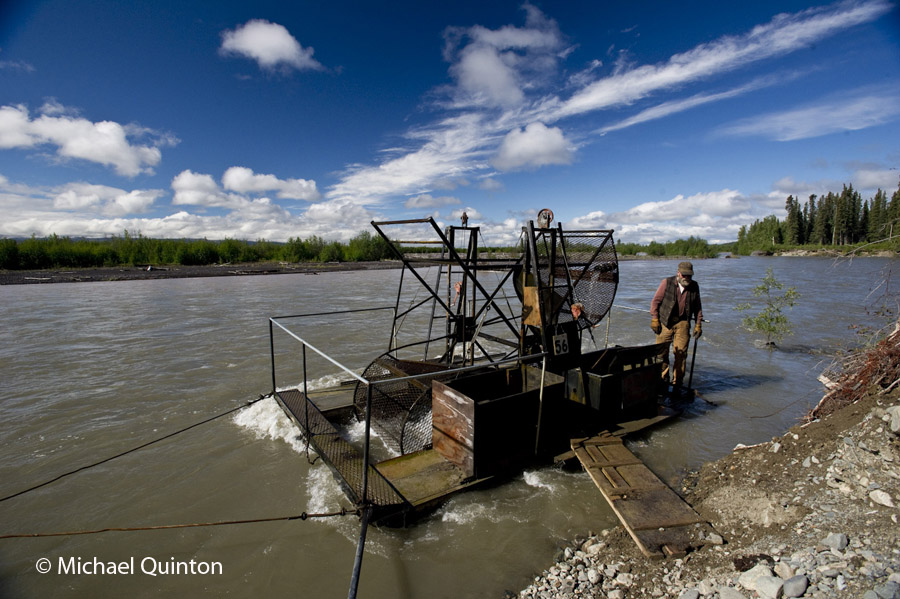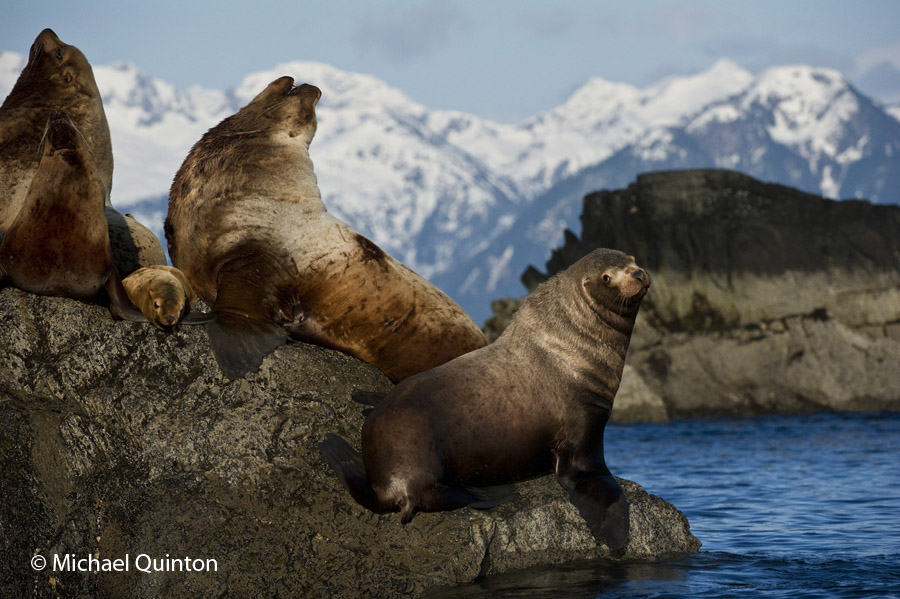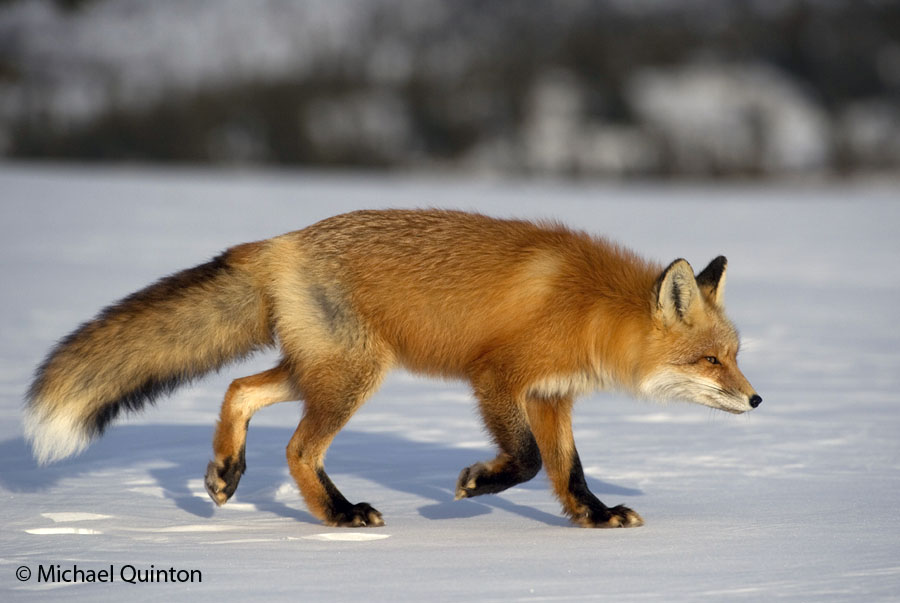 Large male grizzly raids Deirdre Higgins kitchen in Slana, Alaska. To read the story how I got this photograph click on link below.
Large male grizzly raids Deirdre Higgins kitchen in Slana, Alaska. To read the story how I got this photograph click on link below.
http://www.michaelquinton.com/picturestories/DeirdresGrizzly.aspx

 Large male grizzly raids Deirdre Higgins kitchen in Slana, Alaska. To read the story how I got this photograph click on link below.
Large male grizzly raids Deirdre Higgins kitchen in Slana, Alaska. To read the story how I got this photograph click on link below.
http://www.michaelquinton.com/picturestories/DeirdresGrizzly.aspx
Kids find fun in the simple things. Seaweed catches the curiosity of a three year old while a group of big Stellar’s sea lions snooze at low tide. Kids offer the photographer a great opportunity to hone their craft. Photographing kids require all the skill and attention to detail as any other subject. Pay attention to back ground, foreground and be sure to avoid distracting elements that can ruin a good photo. Be ready for those wonderful moments when kids are just being kids.
 For more than two months this male northern flicker and his mate maintain a territory centered around their nesting cavity in an Alaskan black spruce forest. Flickers are the most common woodpecker in Alaska’s interior. Continue reading
For more than two months this male northern flicker and his mate maintain a territory centered around their nesting cavity in an Alaskan black spruce forest. Flickers are the most common woodpecker in Alaska’s interior. Continue reading
 Ole Bates checks fish wheel at Slana after Copper River rises from heavy rains.
Ole Bates checks fish wheel at Slana after Copper River rises from heavy rains.
We got our turn on the fish wheel this week. The fish wheel floats along the shore of the Copper River just downstream from the confluence of the Slana River. The salmon have spent several years feeding at sea and now they are returning to spawning streams in the Slana River drainage. Most of the salmon are sockeye or as they are locally called, Copper River Reds. Continue reading
The Sea Life Center in Seward, Alaska is one of our granddaughter’s favorite places. She loved the Steller’s sea lions, the harbor seals and the sea ducks. Watching a king crab eat a fish, and getting to feel the anemone tentacles and watching it feed were exciting too.
But what fascinated her the most was that “scary thing” scraping the scum from the sea lion tank.
What happens in a close encounter with a grizzly bear is dependent on a lot of factors. What you do is important but the most important factor might boil down to which of the local bears you have just run into. Not all grizzly bears are the same. In fact they are all individuals, with different habits and temperaments. Sub-adults, lacking experience and confidence, often travel with a sibling for extra security and status. Females with cubs don’t like close surprises. Sows with cubs attack people more often than other classes of bears. These defensive attacks can be very serious but rarely end in death. Continue reading
Yesterday I climbed a ladder twenty feet up to a natural hole in a decaying poplar within the boreal owl territory. I had found the male inside the cavity once, so I had always thought it was a likely place for a nest. I took a quick look inside the cavity with flashlight and mirror but there was nothing inside. A single gray, downy feather clung to the bark on the outside. The owl must have been spending some time there, I thought. When I looked around I was surprised to see the little boreal owl glaring at me from about ten feet away. It was clearly agitated that I was at the hole. A few minutes later as I photographed the owl from the ground, I suddenly heard the rapid calling of the male. But it wasn’t the owl I was photographing. There are two boreal owls here!
This morning just after six a. m. I returned to the owl territory. As I neared the poplar the cavity seemed to have vanished. Through binoculars I could see the female was at the cavity entrance peering out at me. What perfect camoflauge. It has been fifty one days since I first located the little male boreal owl. Well, it seems that all his persistant singing has finally paid off.
I got a tip a couple years ago about a lady who had complained about being kept awake at night because the snipes were making too much racket. But it had been too early in the season and I had a sneaky feeling it wasn’t snipes that were keeping her awake.
So, when I paid them a visit a couple weeks ago, I pulled out my I pod and speaker and asked if this is what she had heard. “Oh yes”, that’s it she insisted. “I could never forget that call. And they’re back! I have been hearing them again almost every night. ”
This was exciting news to me, because the call I had played was not the display flight of the common snipe. Instead I had played the territorial call of the boreal owl. She was quite surprised that it was a small owl she had been hearing. Continue reading
 Steller’s sea lions hauled out on rocks along Alaska’s coast.
Steller’s sea lions hauled out on rocks along Alaska’s coast.
Going through ten thousand photos and trying to pick out the best is a daunting task. That was my goal upon returning home from two week photograph trip to coastal Alaska. You must be ruthless and delete the vast majority of shots. There is really not much sense in keeping too many of your photographs. They clutter up your files and make it hard to have the cream, those photos with value, at your finger tips. And when you have whittled your work down to bare bones it makes your entire collection look its best. As you might expect bringing the cream to the top is not so easy. Deleting shots that took a lot of work and more than a little luck requires a collection already bulging with good material and knowledge of what has a chance of being published in this market of low demand and high, very high supply. I pick my keepers by asking questions. Continue reading
 The red fox, Vulpes vulpes is one of nature’s most successful predators, thriving in a variety of habitats from tundra to desert, forest to mountains. Though common throughout their vast range, the red fox makes a tough photo subject. Continue reading
The red fox, Vulpes vulpes is one of nature’s most successful predators, thriving in a variety of habitats from tundra to desert, forest to mountains. Though common throughout their vast range, the red fox makes a tough photo subject. Continue reading